Brzeg-Opole 作者: 来源: 发布时间:2021-07-15
Ⅰ. Population and Area
Population (2019-06-30)
• Total 35,890
• Density 2,490.1/km2 (6,449/sq mi)
Area
• Total 16.0 km2 (6.2 sq mi)
Website https://brzeg.pl
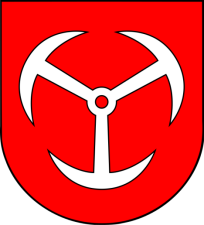
Ⅱ.Natural Geography (environment and resources)
-Status
-The shape of the town, including its neighbouring osiedla, is comparable to that of a deformed rectangle, elongated 3.54 kilometres (2.20 miles) north-south and 4.10 kilometres (2.55 miles) west-east. The area of the town, including the village of Rataje, which was incorporated into Brzeg on January 1, 1973, is some 16 km2 (6.2 sq mi). In comparison to Opole, with a total area of 48 km2 (19 sq mi); Nysa's 29 km2 (11 sq mi) and Kędzierzyn-Koźle's 23 km2 (8.9 sq mi); Brzeg is ranked fourth in the Opole Voivodeship by both population and area.
-Topography
-The Oder, view towards Grobla Island
-Brzeg, as the regional capital of Brzeg County (Powiat Brzeski), is located in the west of the Opole Voivodeship, in the south-east of Poland. The settlement is located in the valley of the Oder, located between Opole 38.5 km to its east and Wrocław, 40.7 kilometres (25.3 miles) to its north-west. The town has a predominantly flat relief (in comparison to the river scarp on the eastern bank of the river). The River Oder, at low water levels (predominantly between June and early September) forms eyots north of Jerzynowa, Kępa and Srebrna Islands. The locality is located in the Brzeg Plain (Rownina Brzeska), part of the Silesian Lowlands. The Brzeg Plain's boundaries are outlined by the Oder river to its north, the Nysa Kłodzka Valley to its south-east, the hillocks of Grodków Hills and the Wawrzyszów Hills to its south. The western boundary of the Brzeg Plain is marked by the Oława Valley, along the Oder's mid-course.
-The Brzeg Plain was formed by the Riss glaciation period (347,000 to 128,000 years ago), leaving behind remnants of a ground moraine from the last glacial period. The ground moraines have left two equally small hills, bearing characteristics of kames. The kames form the Łosiów Range (Wał Łosiowski), between the confluence of the River Nysa Kłodzka and the Oława Valley. Small streams, having their sources around the range, are fed directly into the Oder in the region of Nysa Kłodzka and Oława.
-Settlement and trade
-The settlement of Brzeg, historically located in the regional unit of Lower Silesia as opposed to Upper Silesia, is due to the formation of a "przesieka" ("clearing"). The "clearing" was a lateral formation, extending northerly from the former Sudetes Wildland to the southern foothills of the Sudetes Mountains. The clearing's characteristics set it as a point for defence in the Lower Silesia region, lined with barrages made out of cut down woodland. The Brzeg Plain was settled due to its fertile soil, allowing for the earliest forms of agriculture to develop in the locality. The locality was first settled by Silesian tribes and in later history, until 1675, by the Piast duchies of Duchy of Brzeg, Legnica and Wołów, united under the Duchy of Legnica-Wołów-Brzeg. Presently, the region is spotted with numerous towns, including Brzeg, Grodków and Strzelin, as well as villages, with agriculture providing the major source of income. The development of agriculture is met with a lack of forested areas, apart from the Stobrawa Landscape Park, located 7.2 km to the north of Brzeg and the Oder river. The Stobrawa woodland, agriculture and the Oder (as a form of transport) provided Brzeg the necessary diversity to remain the regional trade capital in Silesia.
-Brzeg's geographical position between two trade routes, running from west to east (Legnica–Opole) and north to south (Gniezno–Nysa) and further on into the Kingdom of Bohemia, additionally stimulated the town's demographic and economic expansion. Presently, Brzeg remains located between the European route E67 and E40.
-Transport
-Brzeg is located at the crossroads of the National Road National road 39 (Poland) (northbound to Namysłów and Kępno; southbound to Wiązów and Strzelin) and the National Road DK94-PL.svg (westbound to Oława, Wrocław, Bolesławiec and Zgorzelec; eastbound to Opole, Strzelce Opolskie, Bytom, Kraków, Tarnów, Jarosław and Korczowa. The interchange to the A4 autostrada (Poland) Motorway (Węzeł Przylesie) is located 14 km south of Brzeg.
-Brzeg has well developed railway and bus transportation services. The PKP Brzeg railway station is operated by PKP Intercity and Przewozy Regionalne. The town has direct connections to Opole, Wrocław, Kraków, Warszawa, Katowice, Poznań, Szczecin, Zielona Góra, Lublin, Kielce, Przemyśl, Zamość, Nysa, and other cities. The Brzeg bus service is operated by PKS Brzeg, with ten bus lines around the town and Gmina Brzeg. The important routes are to Wrocław, Opole, Grodków, Namysłów, Nysa, Karpacz, Strzelin, Wiązów, and others. On Sunday, there is a special route to Szklarska Poręba.
-In 2013, a hospital helipad was opened by Mossora Street (ul. Mossora).
Ⅲ.Economy
-Industry
-The largest concentration of industry in Brzeg is located in the town's eastern quarter, south of the Oder, with numerous manufacturers, including: the German Bartling GmbH (plastic packaging company); "BESEL" (Polish electric engine company, founded in the town in 1950), and CIK car accessories plant. All three industries are located between Ciepłownicza Street (ul. Ciepłownicza) and Składowa Street (ul. Składowa).
-Brzeg is also home to one of the largest confectionary companies in Poland, PWC Odra S.A. (founded in 1946). Presently, the firm is part of the joint-stock company Otmuchów Group. The production plant is located by Starobrzeska Street (ul. Starobrzeska).

Brzeg city budget's income sources as of 2015
-Tourism
-As of 2015, Brzeg had the lowest number of foreign tourists in the Opole Voivodeship, with some 95% being national tourists. Per 1000 of the population, there are 1.60–3.89 available accommodations, which is behind nine of the eleven regional capitals (being at level with Kędzierzyn-Koźle) in the Opole Voivodeship, including Opole, with 3.90–5.89 tourist accommodations per 1000 of the population.
Ⅳ.Industrial Characteristics
-Brzeg is the centre for industry and production in the Brzeg County. The town's industries include the production of agricultural machinery, electric engines, margarine and sugar production.
-Key projects
-1. Announcement about the order: Active Creative Toddler - support program for kindergartens in the Brzeg Commune
-It is co-financed by the European Social Fund under Priority Axis IX - High quality of education, Measure 9.1 Development of education, Sub-measure 9.1.3 Support for preschool education - Regional Operational Program of the Opolskie Voivodeship for 2014-2020.
-Aktywny Kreatywny Maluch – Urząd Miasta w Brzegu https://brzeg.pl/aktywny-kreatywny-maluch/
-2. Expanded transport network
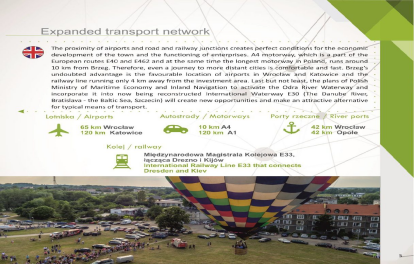
Biznes – aktualności – Urząd Miasta w Brzegu https://brzeg.pl/biznes-aktualnosci/
Ⅴ.Attrations and Cityscape
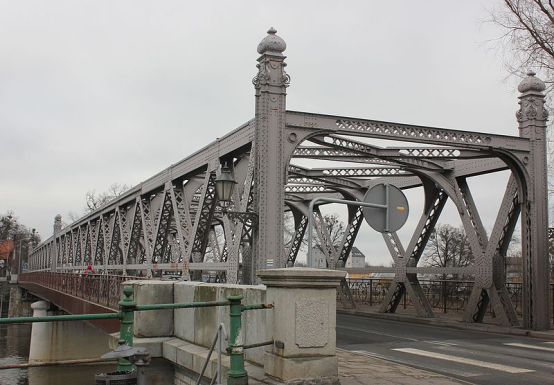
Piastowski Bridge
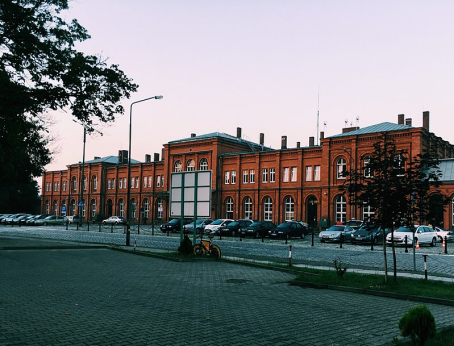
Brzeg railway station
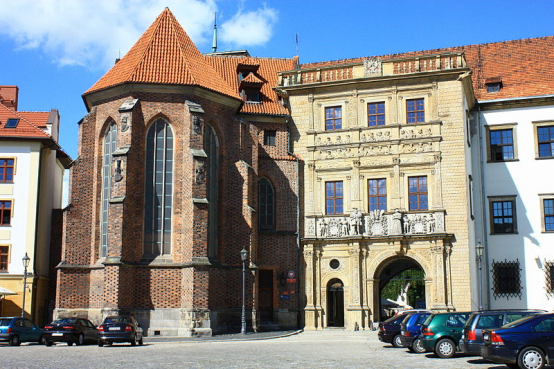
Most characteristic building of Brzeg, Silesian Piasts Castle
-The Renaissance Brzeg Town Hall (Rynek), surrounded by thirteenth-century townhouses.
-Old Castle (Zamek), with an interesting adorned façade, host of the Muzeum Piastów Śląskich. The Brzeg Castle is referred to as the Silesian Wawel. The castle-complex includes the Chapel of St. Jadwiga of Poland.
-St. Nicholas's Church (Gothic architectural style).
-Holy Cross Church (on old castle square), (Baroque architectural style).
-St. Jadwiga's Church, located by the castle.
-St. Luke's Church, a church built in the Neoclassical architectural style.
-Saints Peter and Paul Church, a Franciscan church built in the thirteen-century.
-Baroque figures of John of Nepomuk and Jude the Apostle from 1722, standing by the façade of the Holy Cross Church.
-Statue of the Holy Trinity (on old castle square), raised in 1731.
-Piast Gimnasium (Gimnazium Piastowskie) founded in 1569.
-Odrzańska Gate, part of the former fortifications; located in the Park Odrzański (Odranian Park).
-Water tower (Wieża ciśnień) by Rybacka Street (ul. Rybacka), from 1877.
-Residential townhouses:
-Rynek 19, Renaissance façade from 1621 (reconstruction).
-Chopina 1, Renaissance from 1597.
-Jabłkowa 5, Baroque townhouse from 1715.
-Jabłkowa 7, Empire architectural style from 1797.
-Old Garrison buildings (Stare Koszary) from the Frederick the Great colonisation period.
-Planty - remaining bastion fortifications around the medieval town. The fortifications were deconstructed in 1807, with the area transformed into the Planty Park.
-Synagogue from 1799.
-River Boat Station (Brzeg Marina) (on the east bank of the Oder), built in 2012.
Ⅵ.History and Culture
-The town of Brzeg is located in Silesian Lowlands on the historic route connecting the East with the West – the Pan-European Via Regia, in the place where once on the high bank of the Odra River the Royal Road crossed with the road leading to the Baltic Sea. It can be easily reached from every corner of Europe thanks to a convenient distance from Copernicus Airport Wroclaw (approx. 50 km), using the motorway, local roads or thanks to the railway connection. It’s worth coming to see the hometown of Bartholomeus Stein – the first Silesian, who in the Middle Ages created a pioneering and complete description of his region. This place of a several-hundred-year rule of the Brzeg Dukes of the Piast Family is well worth visiting, being also the birthplace of both the painter Oskar Moll and the world-famous conductor Kurt Masur.
-Before the town itself was founded, in its location there were three pre-location settlements. The biggest one with the seat of duke’s representative was called High Bank, mentioned in the documents as early as in 1234. It is this settlement that gave its name to the present town. Brzeg was granted town privileges between 1246 and 1248. In 1311 the town became the capital of the Brzeg Duchy and remained so until the death of the Piast Family last member – George William IV in 1675.
-Brzeg’s rich history is today reflected by its majestic monuments. The most magnificent is the seat of the Piast Family – the Castle of Silesian Piasts. Brzeg’s churches are also worth noting. They include one of the highest gothic churches in Silesia – St Nicholas Church or the post-Jesuit baroque church of the Raising of the Holy Cross. Visitors to Brzeg always admire the renaissance Town Hall with its beautiful interiors. Coming to Brzeg architecture lovers will see beautiful gothic, renaissance and baroque bourgeois houses. Those seeking active leisure will have an opportunity to use numerous modern sports facilities including the indoor swimming pool and the multipurpose stadium. There are tourist walking and cycling trails across the town including the Trail of Brzeg Polychromes with gothic wall paintings. Brzeg’s parks will give an opportunity to take a rest on scorching hot days. Numerous offers of Brzeg Community Centre and local cultural societies will provide something for the soul. Gourmets, on the other hand, will satisfy their tastes by delighting in the taste of Brzeg’s sweets and local cuisine dishes.
-Practical Information – A4 motorway (exit 190 – Brzeg junction), railway connection – international main railway line E – 33, national road No. 39 and 94.
Ⅶ.Other Information
-Brzeg is a town in southwestern Poland with 35,890 inhabitants (2017) and the capital of Brzeg County. It is situated in Silesia in the Opole Voivodeship on the left bank of the Oder River.
-The town of Brzeg was first mentioned as a trading and fishing settlement in the year 1234. In 1248, Silesian Duke Henry III the White granted the settlement Magdeburg town rights and by the late 13th century the city became fortified. Sometimes referred to as “the garden town”, the town's size greatly expanded after the construction of dwelling houses which were located on the city outskirts. From the early 14th to late 17th centuries, the town was ruled by the Piast dynasty as fiefs of the Bohemian Crown within the Holy Roman Empire. Later, as the result of the Silesian Wars, the town became Prussian. After the border shifts of 1945, the town's German populace was expelled and the town became part of Poland.
Ⅷ.Contact Information
Mayor Jerzy Wrębiak
Telefon / Fax
+48 77 416 99 70
+48 77 416 99 52
Email: um@brzeg.pl
